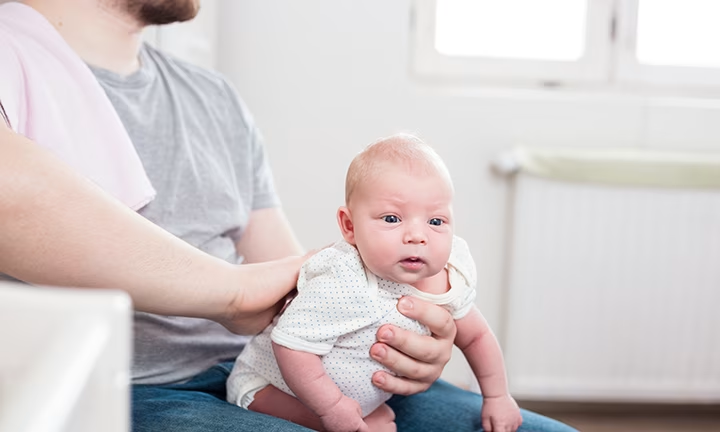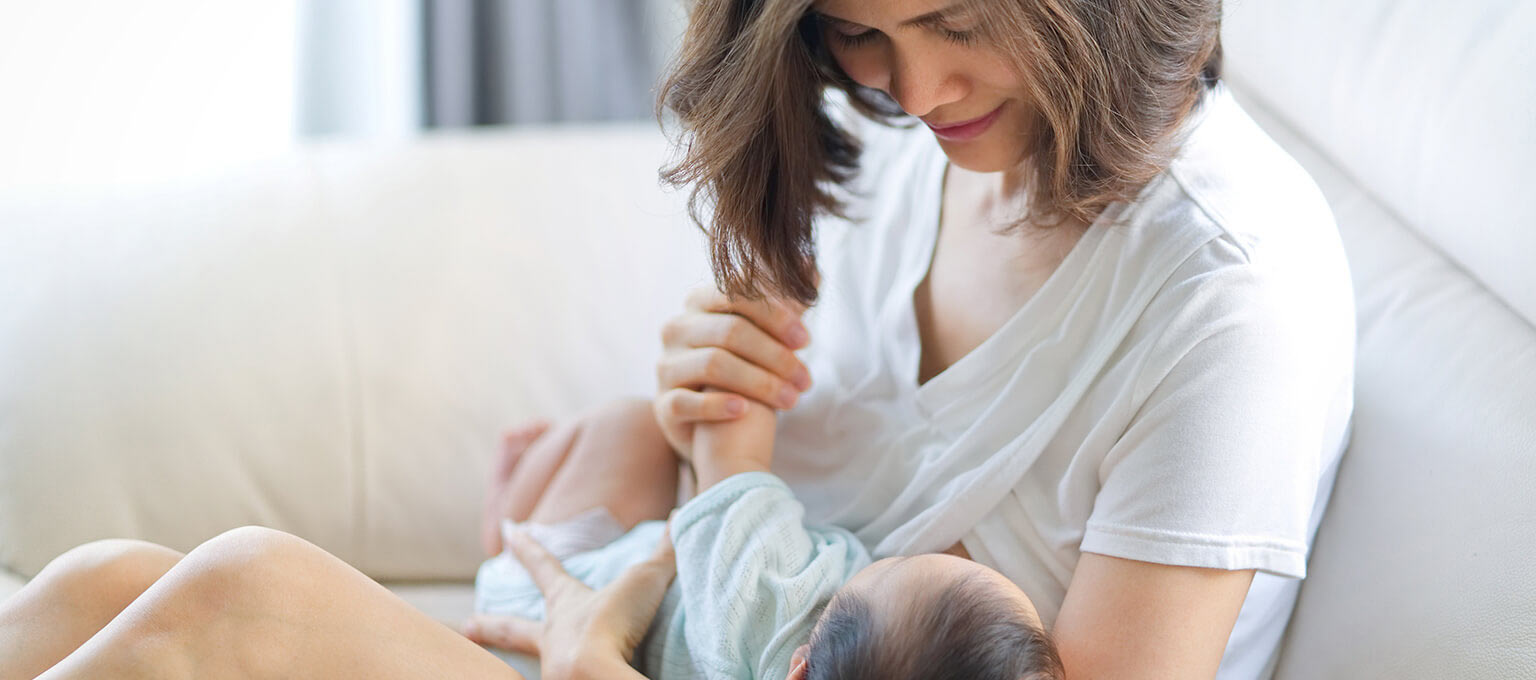
How to Burp a Newborn: Positions, Tips, & When to Stop
Burping helps release air your baby may swallow during feeding—something that can cause discomfort, gassiness, or spit-up if left trapped. Whether your baby is bottle-fed or breastfed, learning how to burp a newborn can make feedings smoother for both of you.
Quick Tips:
In this guide, you’ll find simple, baby-friendly tips to help you burp more effectively and confidently at every stage.
Why Do Babies Need to be Burped?
Feeding can cause babies to swallow air, which may lead to discomfort, fussiness, or spit-up. Burping helps release that air, which can make feeding and resting easier.
You may ask yourself: “Why do you burp a baby?” or more specifically, “Why do you have to burp newborns?” Newborns tend to take in more air because their sucking reflexes are still developing. That’s why burping can be helpful, especially early on.
So, burping your little one may ease gas buildup and support more comfortable feedings.
How Often Should You Burp a Baby?
You might be asking, “Do you have to burp a newborn after every feeding?” Not always, but burping regularly can still help. One thing you can try is to burp your baby frequently during a feed, even if they don’t seem uncomfortable. The pause and shift in position may slow their gulping and reduce the amount of swallowed air.
If your baby is bottle-feeding, try to burp them after every 2 to 3 ounces (60–90 ml). If you're breastfeeding, burp your baby when switching breasts. Do you burp your baby after breastfeeding? It can help, especially in the early weeks. Breastfed babies may swallow less air, but they might still need to burp now and then.
How to Burp Your Baby
There’s no single right way to burp a baby, but trying different burping positions for newborns can help you find what works best. These are gentle, supportive methods that make it easier for air bubbles to escape and can help your little one feel more comfortable during and after feedings.
Here are three classic techniques often recommended as newborn burping positions:
These burping positions offer a mix of upright and angled options so that you can adjust based on your baby’s needs. If your little one hasn’t burped after a few minutes, that’s okay—some babies just don’t burp every time. Try again at the end of the feeding, and then keep them upright for 10 to 15 minutes to help reduce spit-up.
When to Stop Burping a Baby?
So, when can you stop burping your baby? There’s no exact age when you can stop burping your baby. It depends on how your little one feeds and digests. Eventually, you’ll likely notice they burp on their own or seem comfortable without it.
In the early weeks, try burping your baby frequently, even during a feed. Pausing during feeding can prevent too much air from building up, which may help ease fussiness.
Try burping:
What Happens After Burping?
Once your baby burps, they may be more comfortable and ready to continue feeding or rest. A successful burp can help relieve pressure from swallowed air and reduce the chance of spit-up.
After feeding, try to keep your baby upright for 10 to 15 minutes. This may help any remaining air settle and may prevent spit-up, especially in the early weeks or if your little one tends to be gassy.
Common Challenges to Burping a Baby
Sometimes burping isn’t as straightforward as it sounds. Here are a couple of common situations you might run into, and how to handle them with care.
What if Your Baby Doesn’t Burp?
It’s common to wonder, “What if my baby doesn't burp?” The truth is, not every baby burps after every feed—and that’s usually nothing to worry about.
Some babies take in very little air, especially if they latch well or feed calmly. Others may pass gas later instead of burping. If your little one seems content, feeds well, and isn’t unusually fussy, it’s okay to move on and simply keep them upright for a bit after feeding.
If your baby tends to be gassy or fussy during or after feeds, you could try:
If burping continues to be difficult or your baby seems uncomfortable, check in with your baby’s healthcare provider for guidance.
Handling Hiccups and Spit-up
Hiccups are common in babies and usually harmless. They may happen during or after feeding, and they often go away on their own. If hiccups seem frequent, try feeding your baby a little earlier, before they get very hungry or start crying, which can reduce the amount of swallowed air.
Spit-up can also happen, especially in the first few months. It’s usually not a sign of anything serious. Burping during feeds and keeping your baby upright afterward can help reduce how often it happens. If your little one is gaining weight, feeding well, and doesn’t seem distressed, spit-up is likely normal.
Still, if spit-up is forceful, frequent, or seems to bother your baby, reach out to your baby’s healthcare provider for support.
When to Consult Your Healthcare Provider
Most of the time, burping is simple and doesn’t require much worry. But there are moments when checking in with your baby’s healthcare provider might help.
Reach out if your baby:
If you’ve tried different burping positions for newborns and frequent breaks during feeds without improvement, your provider can help you figure out what’s going on and suggest next steps.
FAQS AT A GLANCE
Instead of aiming for a faster burp, try more frequent and effective ones. Burp your baby during feeds and experiment with different burping positions for newborns.
The Bottom Line
Burping is a simple way to help your baby feel more comfortable during and after feedings. Whether you’re bottle-feeding or breastfeeding, offering burp breaks and trying different positions can make a big difference in how your baby feeds and rests.
As your little one grows, you’ll likely figure out what works best. And if burping doesn’t always happen or seems challenging, know that every baby is different. When in doubt, your baby’s healthcare provider can help guide you.
Looking for ways to save on diapers while you care for your little one? Download the Pampers Rewards App for digital discounts.
- HealthyChildren.org. “Baby Burping, Hiccups, and Spit-Up.”
- HealthyChildren.org. “Breaking Up Gas.”
- KidsHealth. “Burping Your Baby.”
- KidsHealth (Humana Louisiana). “Burping Your Baby.”
- Mayo Clinic. “Healthy Baby: 8 Tips for the First 30 Days.”
- MedlinePlus. “Burping Techniques – Infant Burping Positions Image.”
- MedlinePlus. “Reflux in Infants.”
Read more about Baby
Related Articles
Join a World of Support
through Pregnancy and Parenthood.
TRACK WITH TOOLS
LEARN WITH EXPERTS
GET REWARDED









